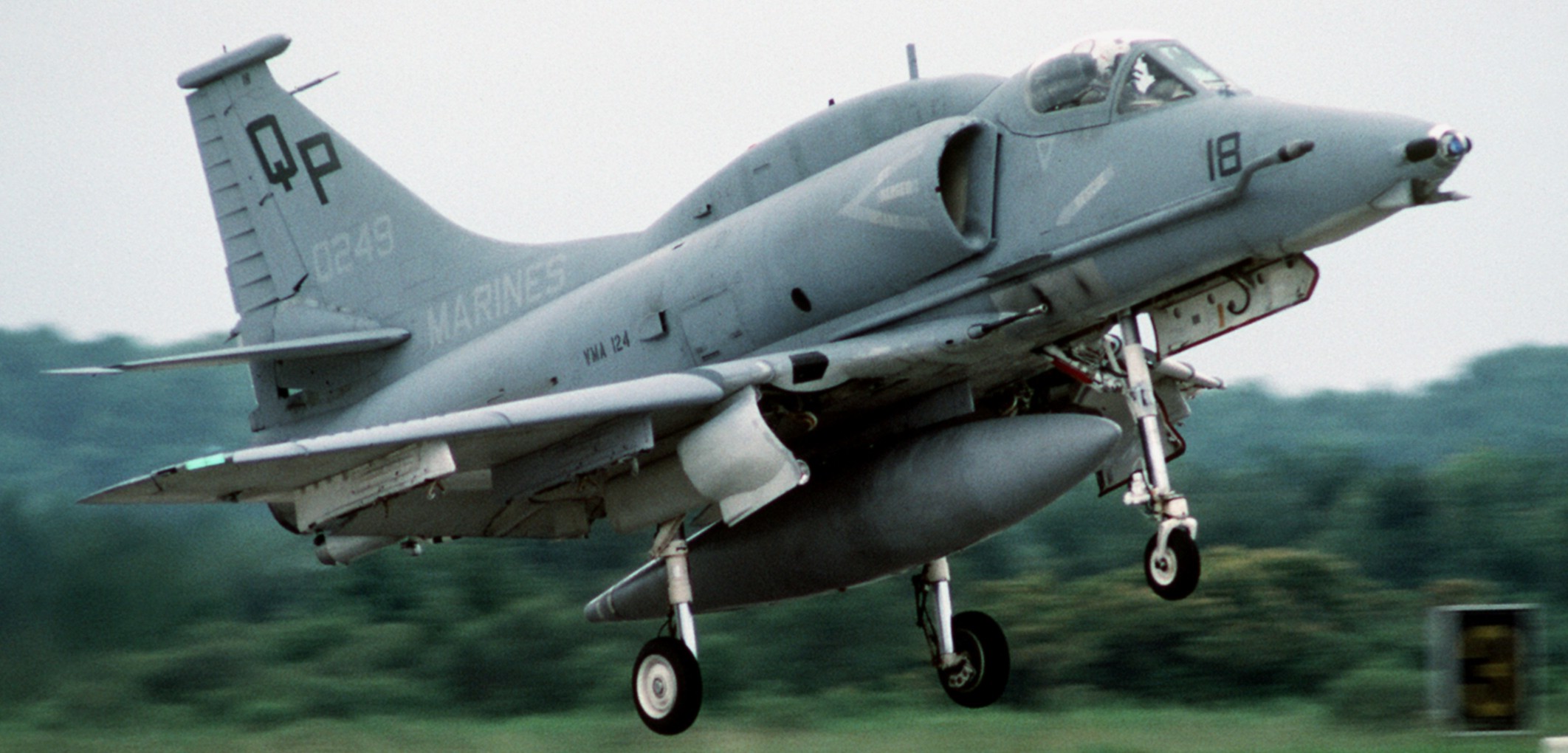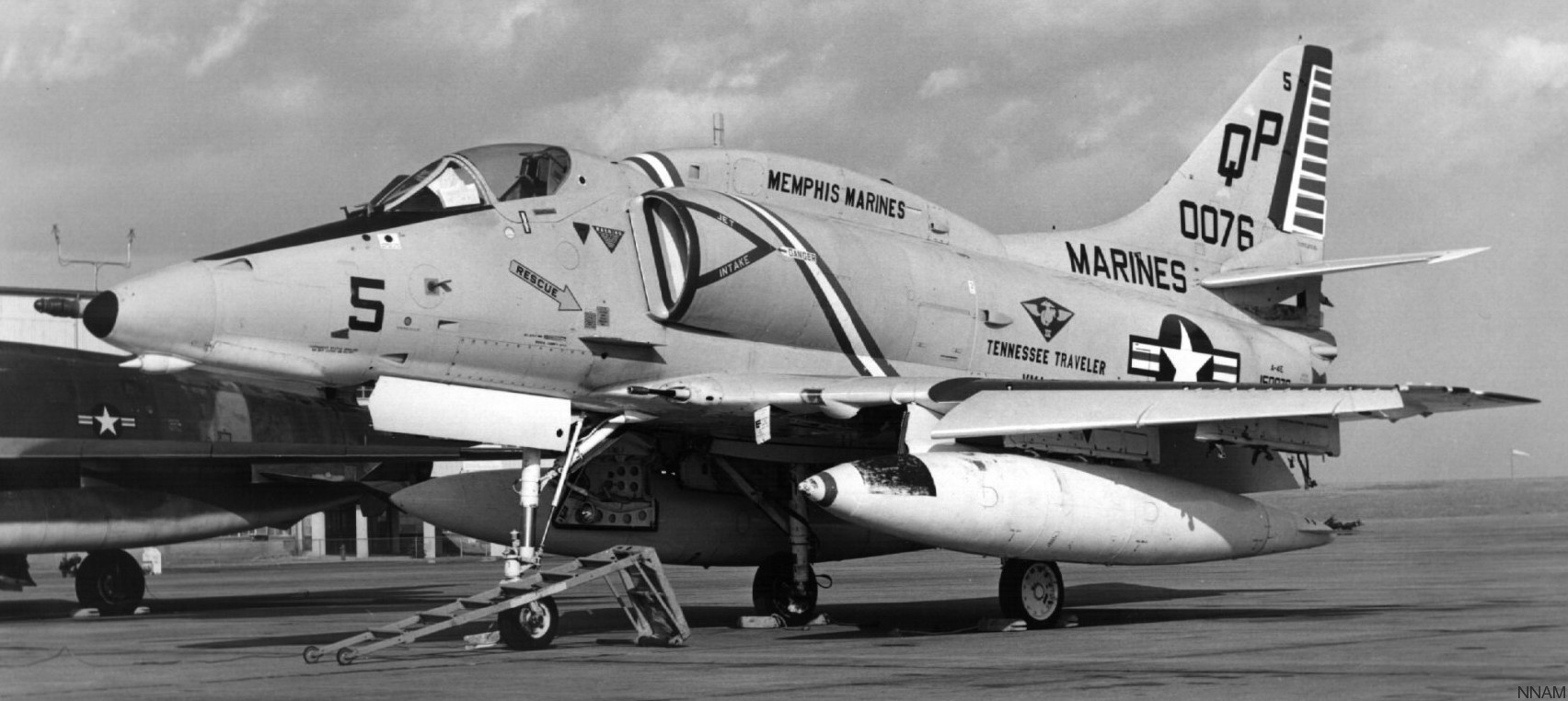 |
|||||||
|
HOME
|
US Navy -
ships
|
US Navy - air
units
|
USMC - air
units
|
International
Navies
|
Weapon Systems
|
Special Reports |
|||||||
|
US Marine Corps - Marine Fighter Attack Squadron
124 VMFA-124 'Whistling Death' |
|||||||
| no VMFA-124 crest available |
no VMFA-124 aircraft image available |
||||||
| 12/21 | |||||||
|
|||||||
| images | |||||||
|
VMA-124  A-4M Skyhawk (VMA-124) at NAS Oceana, Virginia - August 1989  A-4E Skyhawk (VMA-124) at NAS Memphis, Tennessee - 1970's VMF-124  Vella Lavella airfield in the solomons on 10 December 1943. Visible U.S. Marine Corps Vought F4U-1 Corsair aircraft of Marine fighter squadrons VMF-123 and VMF-124, Grumman F6F-3 Hellcats, a Douglas SBD Dauntless, and RNZAF Curtiss Kittyhawk Mk.IV (P-40F) on the primitive runway at Vella Lavella in the Solomon Islands, which was seized in the summer of 1943 and served as a base of operations to support landings by Allied forces in the Treasury Islands and at Cape Torokina, Bougainville. The swift advance of Allied forces in the South Pacific soon bypassed Vella Lavella and the airfield ceased operations in September 1944, less than a year after the first aircraft arrived.  U.S. Marine Corps Vought F4U-1 Corsair fighters of Marine Fighting Squadron VMF-124 Whistling Death on Guadalcanal, in April 1943. VMF-124 was the first Corsair unit to enter combat, in February 1943  The first U.S. Marine Corps Vought F4U-1 Corsair of Marine Fighting Squadron VMF-124 Whistling Death on Guadalcanal, 13 February 1943. It had arrived on Guadalcanal on the morning of 12 February led by their commanding officer, Major William Gise. VMF-124 flew its first mission before lunch that day, with twelve F4Us escorting a PBY Catalina on a 350 km mission to pick up two downed pilots at Sandfly Bay, Vella Lavella. |
|||||||
|
|
|||||||
|
Marine Fighter Attack Squadron 124 (VMFA-124) was a flying squadron
in the Marine Forces Reserve based out of Naval Air Station Memphis
flying the A-4 Skyhawk. They were part of Marine Aircraft Group 42
and were decommissioned on 19 June 1999. The squadron is best known
as the first Marine squadron to fly the F4U Corsair during World War
II and also the first squadron to be based on an aircraft carrier.
They were known as the “Wild Aces” and ended World War II with 78
air-to-air victories against Japanese aircraft. VMF-124 was formed on September 2, 1942 at Camp Kearney, San Diego, California. They were declared fully operational on December 28, 1942 even though the squadron’s pilots had only an average of 25 hours each in the plane. They arrived on Guadalcanal on the morning of February 12, 1943 led by their commanding officer, Major William Gise. The squadron flew their first mission before lunch that day, with twelve F4Us escorting a PBY Catalina on a 230 mile mission to pick up two downed pilots at Sandfly Bay, Vella Lavella. The first F4U pilot to be decorated with the Medal of Honor came from VMF-124 - 1st Lt Kenneth A. Walsh for a mission on August 30, 1943, during which he shot down four Japanese Zeros before ditching his borrowed Corsair. The squadron remained in the Solomon Islands until September 1943, fighting over the Russell Islands, New Georgia and Vella Levella. Following the fighting in the Solomons, the squadron was disbanded and reconstituted back in the United States where it trained in the Mojave Desert at Marine Corps Auxiliary Airfield Mojave for the next year. When they received their orders for carrier assignments they had 5 combat experienced pilots as their training nucleus VMF-124 left the States again on September 18, 1944, heading to Hawaii. While in Hawaii they were attached to Navy Air Group 4 who were operating off the USS Essex (CV-9). Along with VMF-213, 124 became the first Marine squadron to be based on an aircraft carrier. While deployed aboard the Essex, they took part in fighting over Lingayen, Luzon, Formosa, Tokyo, Iwo Jima and Okinawa. On January 3, 1945 VMF-124 and VMF-213 struck Formosa and the Ryukyu Islands in the first Marine land strike off a carrier. Reserve activity: The squadron was reformed shortly after the war at Naval Air Station Memphis and were equipped with the F4U-4 Corsair. They were the first squadron in the newly formed Marine Air Reserve Training Command to reach full strength. The squadron was redesignated Marine Attack Squadron 124 (VMA-124) on May 1, 1965 and were subsequently equipped with the A-4 Skyhawk. During the 1970s and 1980s they flew various versions of the A-4 until 1994 when the squadron was moved to Naval Air Station Joint Reserve Base Fort Worth and redesignated Marine Fighter Attack Squadron 124 (VMFA-124). The squadron existed as a paper squadron only for two years while awaiting F/A-18 Hornets that would never materialize. The squadron existed on paper only until they were finally deactivated on 19 June 1999. source: wikipedia |
|||||||
|
|
|||||||
| patches + more | |||||||
  |
|||||||
| | seaforces.org | US Marine Corps Air units start page | | |||||||